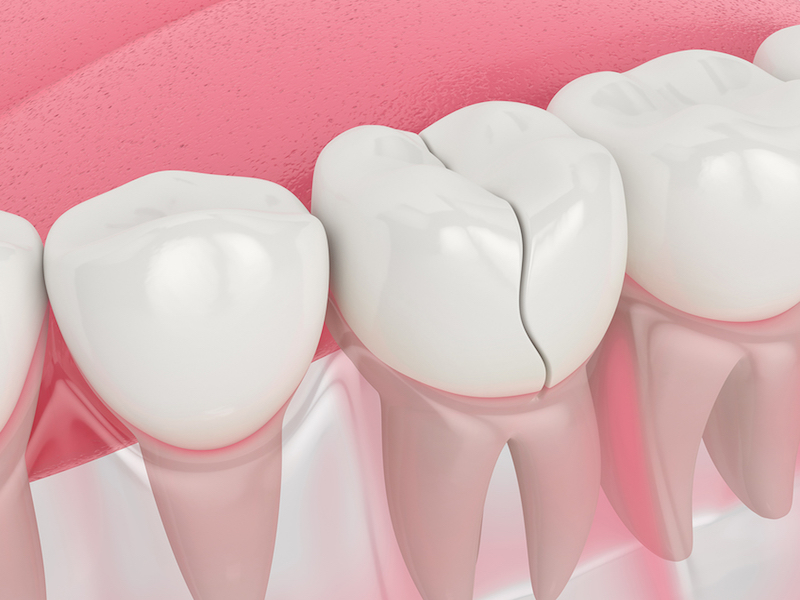Do you suffer from sharp pain and sensitivity but can't pinpoint exactly where the pain is coming from? You may be suffering from cracked tooth syndrome.
Cracked tooth syndrome is becoming more and more common amongst adults and can be very uncomfortable and painful. If the crack is located and treated early, your dentist may be able to prevent the crack from progressing through the tooth, however, if left untreated, can affect the pulp or nerve of the tooth which can lead to serious oral problems and can become untreatable. A tooth crack can also be described as a craze, fracture or a split, depending on your conditions.
Cracked tooth syndrome often occurs in a molar or premolar but can affect any tooth. It often involves teeth that have large fillings where the crack runs under a weakened cusp, teeth subject to heavy biting or grinding or teeth that have suffered trauma.
Causes of Crack Tooth Syndrome
- Teeth that have been weakened due to decay or large fillings
- Bruxism (clenching or grinding of the teeth)
- Daily wear and tear
- Chewing on hard goods or substances (such as ice, sweets or pencils)
- Trauma such as blow to the teeth
Symptoms and diagnosis of a Cracked tooth
You may have a cracked tooth if you experience the following
- Sharp and erratic pain upon chewing
- Pain or discomfort when consuming hot or cold foods or liquids
- Sensitivity to sweet foods
- Difficulty pinpointing exactly the source of the pain
- Gum disease extending along the root surface
It can be difficult to diagnose a cracked tooth as symptoms are often inconsistent. This leads to not discovering the cracked tooth until various symptoms are present. However, your dentist can use methods to diagnose a cracked tooth with the following methods
- Comprehensive oral exam: checking for tooth wear, occlusion between top and bottom teeth, cracks on the surface of the tooth and large fillings or weakened cusps
- Bite tests: pinpointing the exact location of the crack
- Probing the gums: assessing the extent of the crack
- X-rays
- Removal of filling
- Staining
- Temperature: checking the sensitivity of the tooth
Prevention methods
There are several measures you can take to minimise the risk of cracked tooth syndrome.
- If you clench or grind your teeth, especially at night, you can have a night guard (occlusal splint) fitted by your dentist to wear during sleep
- Avoid chewing on hard objects
- Wear a protective guard during contact sport
- Practice good oral hygeine and minimise the need for fillings
If you have concerns for a cracked tooth, or any other general inquiries about your dental health, call 9181 2226 or email us at [email protected] to book in an appointment with our friendly dentists today.
